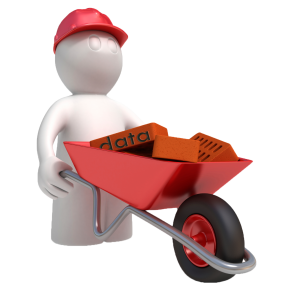 Do you have a business plan? Does that business plan include expenses and what you expect to get in return for those expenses?
Do you have a business plan? Does that business plan include expenses and what you expect to get in return for those expenses?
For example, when you pay your Internet bill, you expect to have a certain amount of bandwidth available and that your download and upload speeds will be available within reasonable (or higher) limits set by your provider.
You should expect the same from your marketing budget. That budget should include reasonable expectation for a return on what you spend on marketing.
If you purchase traditional broadcast advertising, you research audiences and then select particular stations and times that are more prone to hitting the attention of certain demographics, in the hope of generating sales and/or business leads.
Shouldn’t the same thing apply to your website?
Recently, Econsultancy and Lynchpin published a research survey that suggested only 10 percent of marketers thought a most or all of their web analytics data was useful. A combined 59 percent of the marketers surveyed suggested that half or less of the Web analytics data they collected were useful.
This begs the question: Are web analytics data useless?
The answer, of course, is: it depends.
The survey dug a bit deeper, asking respondents if they tied web-based and non-web-based marketing initiatives together using common metrics. Not surprisingly, almost half (47 percent) of the participants indicated they had not integrated the marketing initiative or didn’t have a business intelligence strategy altogether.
Web analytics is more than just dumping some numbers on a page and trying to see if you “did well” or not. Web analytics is a process that ties together your investments across marketing channels and measures them against the online results. It isn’t merely reporting pageviews, bounce rates and time on your website. You don’t make up a formula with these values and call it “engagement.”
When the question begins with and revolves around dollars, the answer should too. That is to say, if you are given a dollar amount of how much was invested into an online campaign, you should be able to give a dollar amount in response to the question “how well did we do?”
Your web analytics data should account for visitors from each channel (online and offline). It should account for the cost of acquisition. And it should account for sales, leads, company money saved. All of these metrics must be measured by your organization’s business objectives.
It’s Relatively Simple
Here are some key takeaways for making your data more meaningful:
- Just like in a brick and mortar, not everyone who enters is prepared to purchase. Some are looking for information to help decide between competing products. Others are looking for after-the-sale support. Still others aren’t a potential customer at all. They may be looking for a job, or finding a store location and hours. Segment these visitors by their behavior based on content viewed. Good site architecture helps here.
- Assign dollar values. Almost anything can have a dollar amount associated with it. Sales, of course, are easy to understand in terms of dollars. Newsletter subscriptions are opt-in, ready-and-interested people who just gave you their email address. Think back to the last lead list you purchased. How much did you pay, divided by the number of working email addresses?
- Help and support can also be measured financially. If your customer support department spends time on a phone, there’s the hourly cost and a phone charge involved. If you have a toll-free phone number, that cost goes up even more. An average download might save your support agent 15 minutes of phone time. What is that time worth?
Web analytics is all about giving meaning to your visitor traffic data. By itself, data is not useful. Data is numbers, unconnected to any context.
When you apply context to numbers, you get information. When you interpret the information and apply it to your business objectives, that information becomes quality analysis with recommendations for actions to make the process better. Then you start over again collecting data.
 Do you have a business plan? Does that business plan include expenses and what you expect to get in return for those expenses?
Do you have a business plan? Does that business plan include expenses and what you expect to get in return for those expenses?